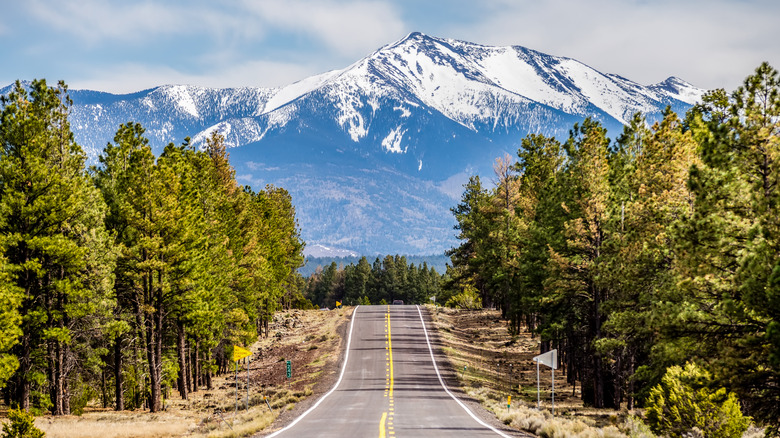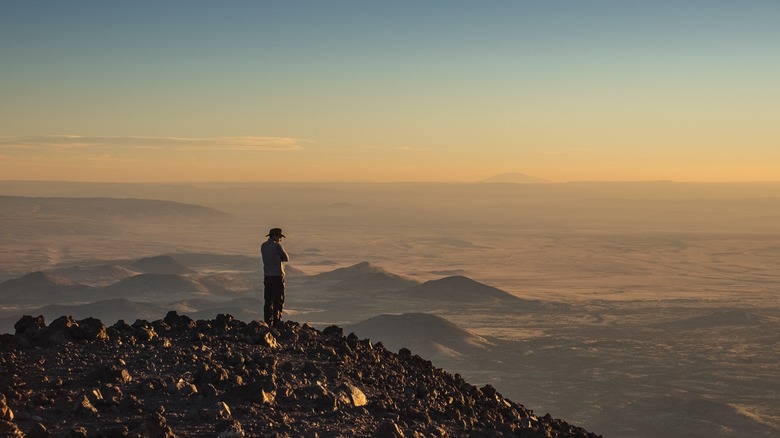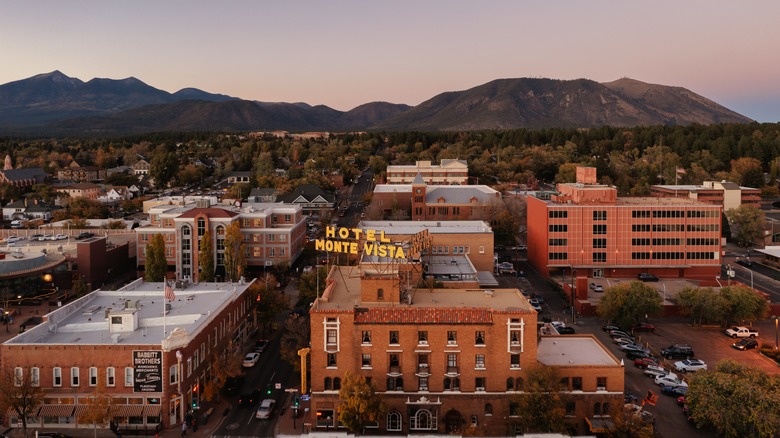This Hike In Northern Arizona Is Definitely Not For Amateurs
When people think of Arizona, a few things often spring to mind: the wonders of the Grand Canyon, vast expanses of cactus-studded desert, and weather hot enough to fry burgers on the sidewalk. What some people don't know is that Arizona also has some pretty tall mountains. The San Francisco peaks are a group of mountains near Flagstaff, Arizona that are situated along the rim of an eroded dormant volcano. The jagged cones are often snow-capped, making for an impressive sight on the horizon. In addition, the peaks are sacredto several groups of Indigenous peoples — the Hopi, Navajo, and Havasupai.
Humphreys Peak, the tallest in the range, reaches 12,633 feet, making it the highest point in the state. If you're like many other adventurers, just knowing that fact may make you want to grab your boots and a few energy bars and head straight for the top of Arizona. But hold on a second. Even though Humphreys isn't exactly K2, getting to its summit is no easy feat for your feet. While it's an exhilarating adventure, it's also a tough hike that requires some training, preparation, caution, and mental grit.
Reaching Humphreys' Summit
Unless you're super fit, getting in shape for Humphreys will help you have a safe and enjoyable experience. Train by doing uphill hikes, if possible, in the months before your adventure. Acclimate yourself to the altitude by staying overnight in Flagstaff, which is already at an elevation of 7,000 feet. Essential gear to include in your hiking pack include plenty of water and snacks, a first-aid kit, and appropriate clothing. Know that even if it's summery at the trailhead, it can be snowing near the summit. So be sure to wear waterproof hiking shoes with excellent traction and don't skip the warm and waterproof clothing layers. The best time of year for this adventure is late spring, summer, or early fall. Unless you're a skilled mountaineer well-versed in assessing avalanche risk, don't attempt this hike in winter.
Your journey begins at the Arizona Snowbowl, a ski resort on the western slope of the mountain. The clearly marked trail, which is 10.7 miles round trip, is steep and rocky, with an elevation gain of about 3,400 feet. As you ascend, you'll pass through dense forests of aspen and pine and some open meadows. Finally, you'll reach the treeless alpine tundra, which may fool you into thinking you're almost there. Think again. This is one of those climbs with a few "false summits," high ridges that appear to be the top but are obscuring the actual summit, which is still quite a distance away. Soldier on.
Conquering Arizona's highest peak
When in the tundra, you're highly exposed to the elements. Expect strong gusts of wind, even on a pleasant day. Storms can come on suddenly, and if that's the case, take shelter near rocks and do not proceed further up the trail or you risk getting struck by lightning. When it's all clear, proceed. The path becomes rockier and more rugged as it nears the summit, with the thin air making exercise more taxing. This is where the mental grit comes in. But you got this!
Reaching the summit of Humphreys Peak is an incredible experience. You'll not only experience peak baggers' high but also have breathtaking panoramic views of northern Arizona. You'll even be able to see the glowing orange edge of the Grand Canyon on a clear day. Spend a few moments savoring that feeling of standing on top of the world and take a few selfies — you've earned them.
It's all downhill from here, baby. But be careful not to slip on the loose rock as you descend, especially since your legs may be tired. Trekking poles can be really useful on these tricky portions of the hike. When you finally return to the trailhead, it's time to high-five your climbing buddies and head into town for some serious refueling. Fortunately, Flagstaff is right around the corner and has a great selection of restaurants and a few breweries if you need to quench your thirst.


